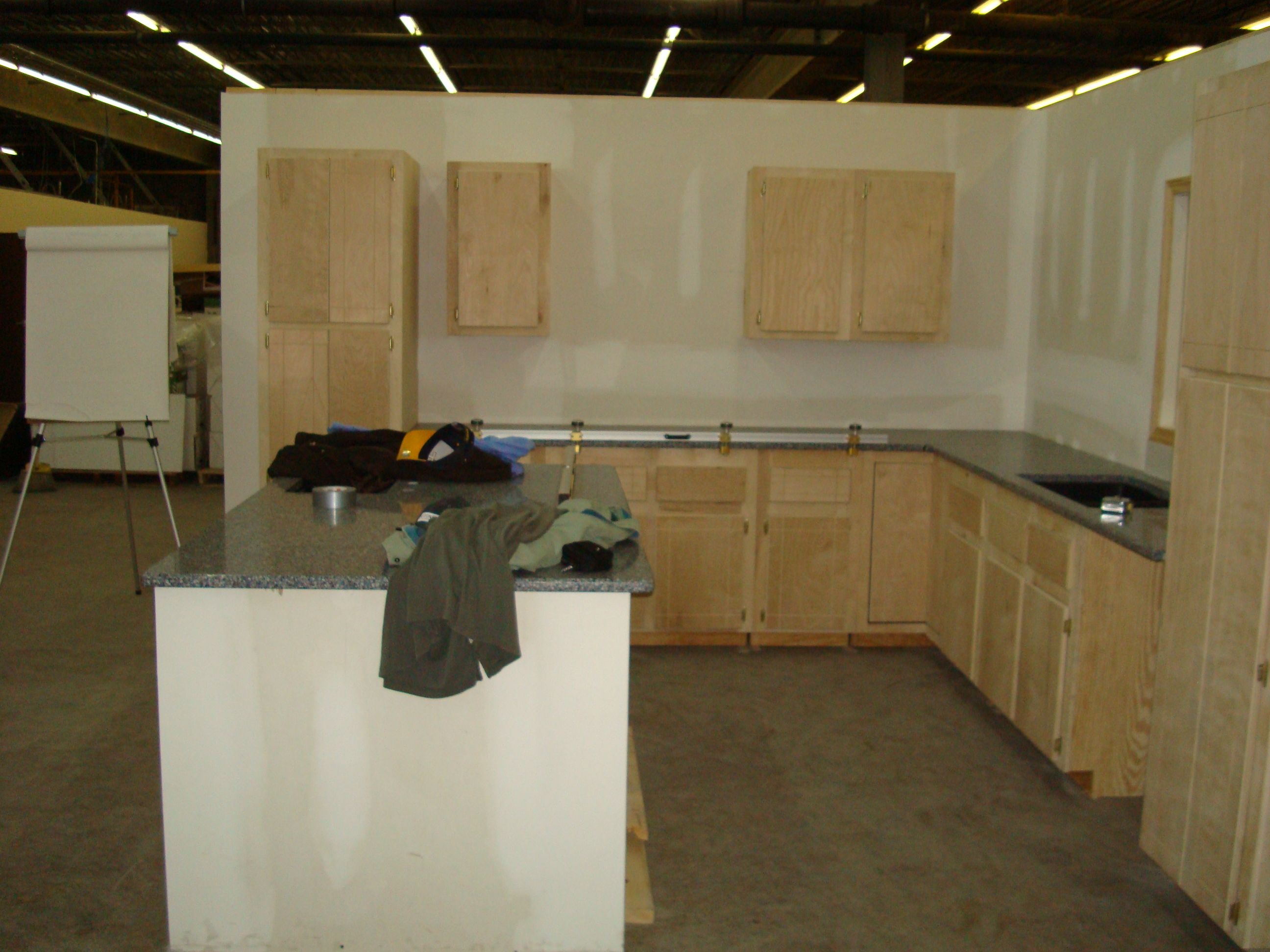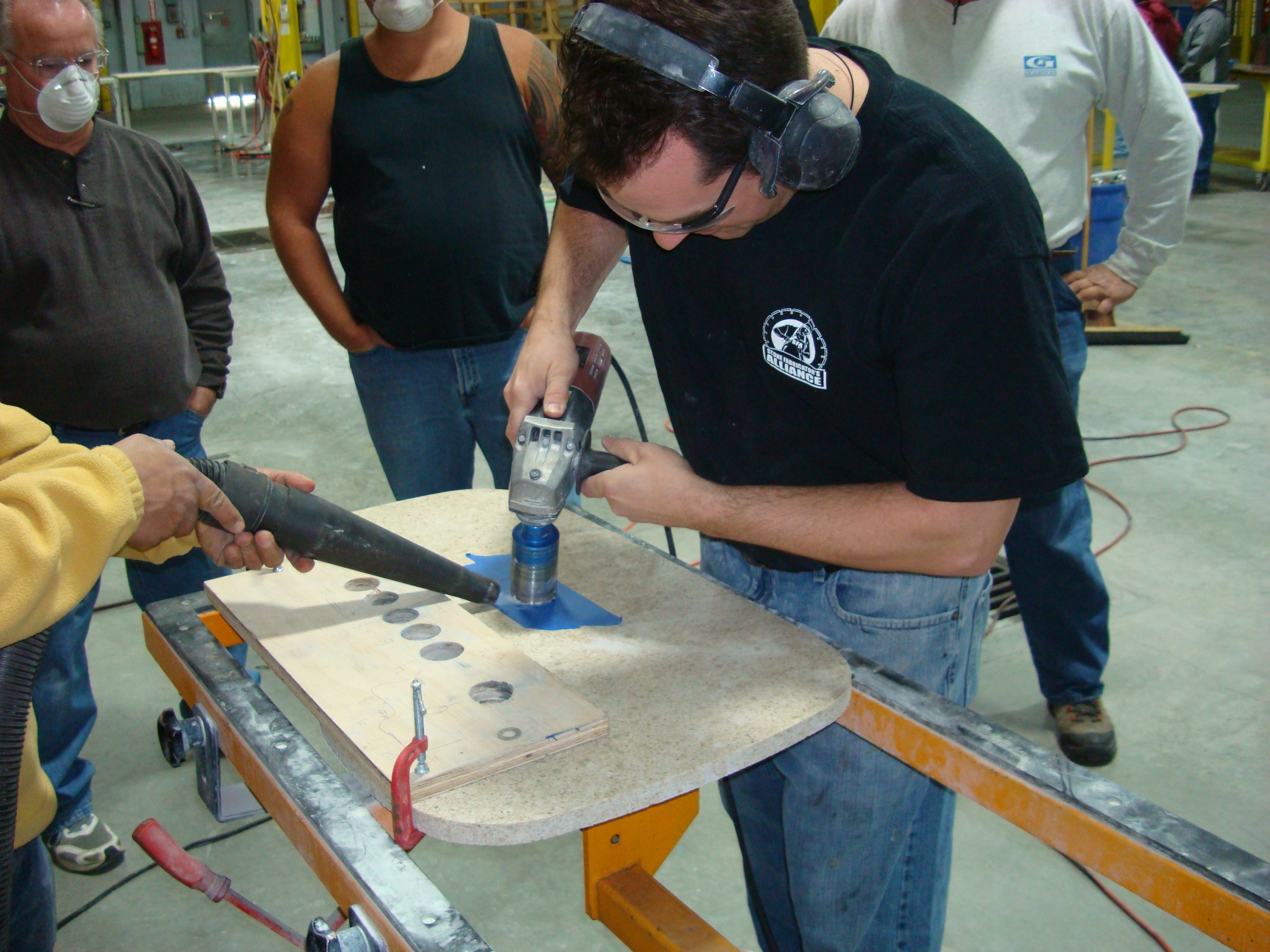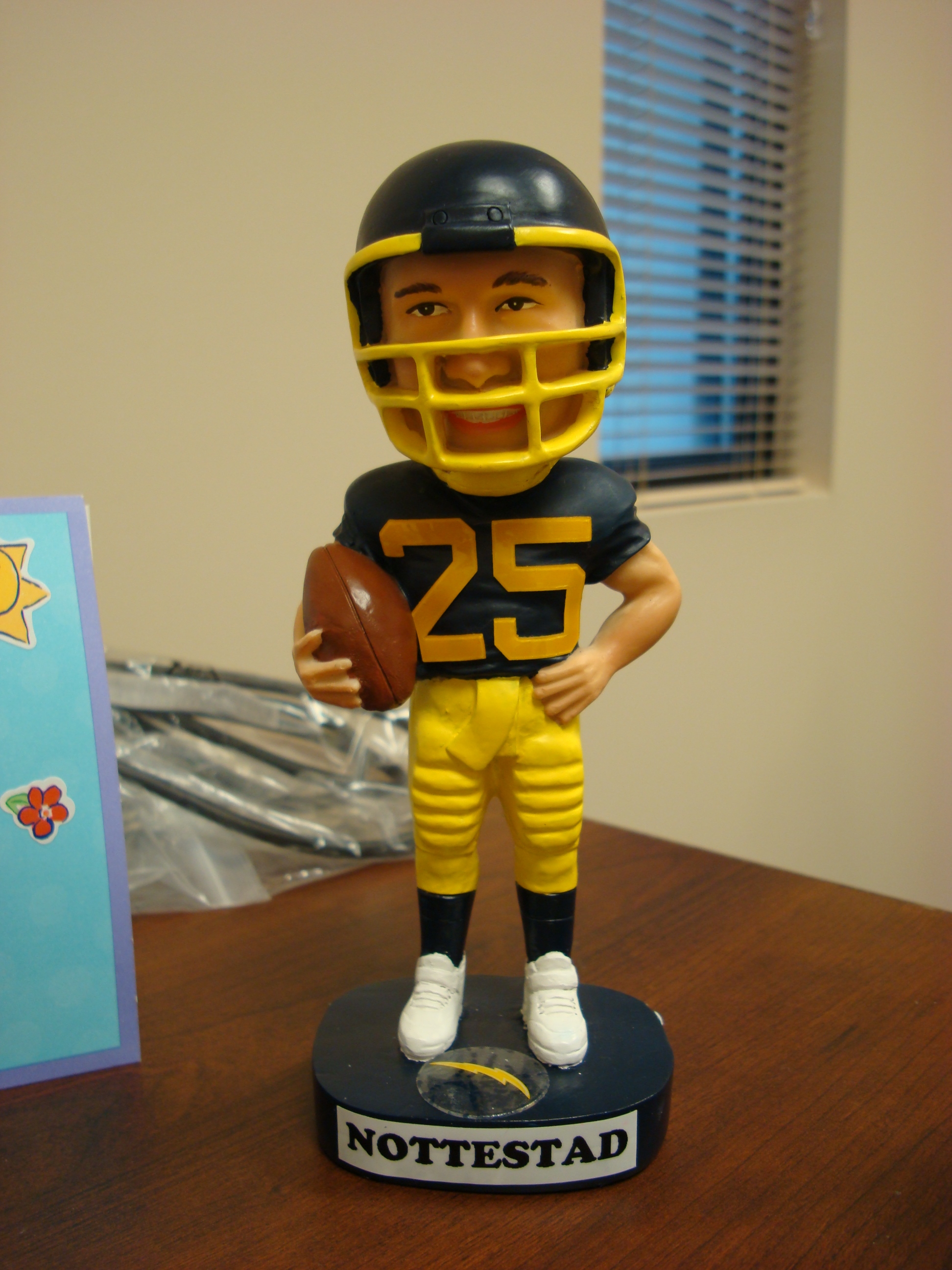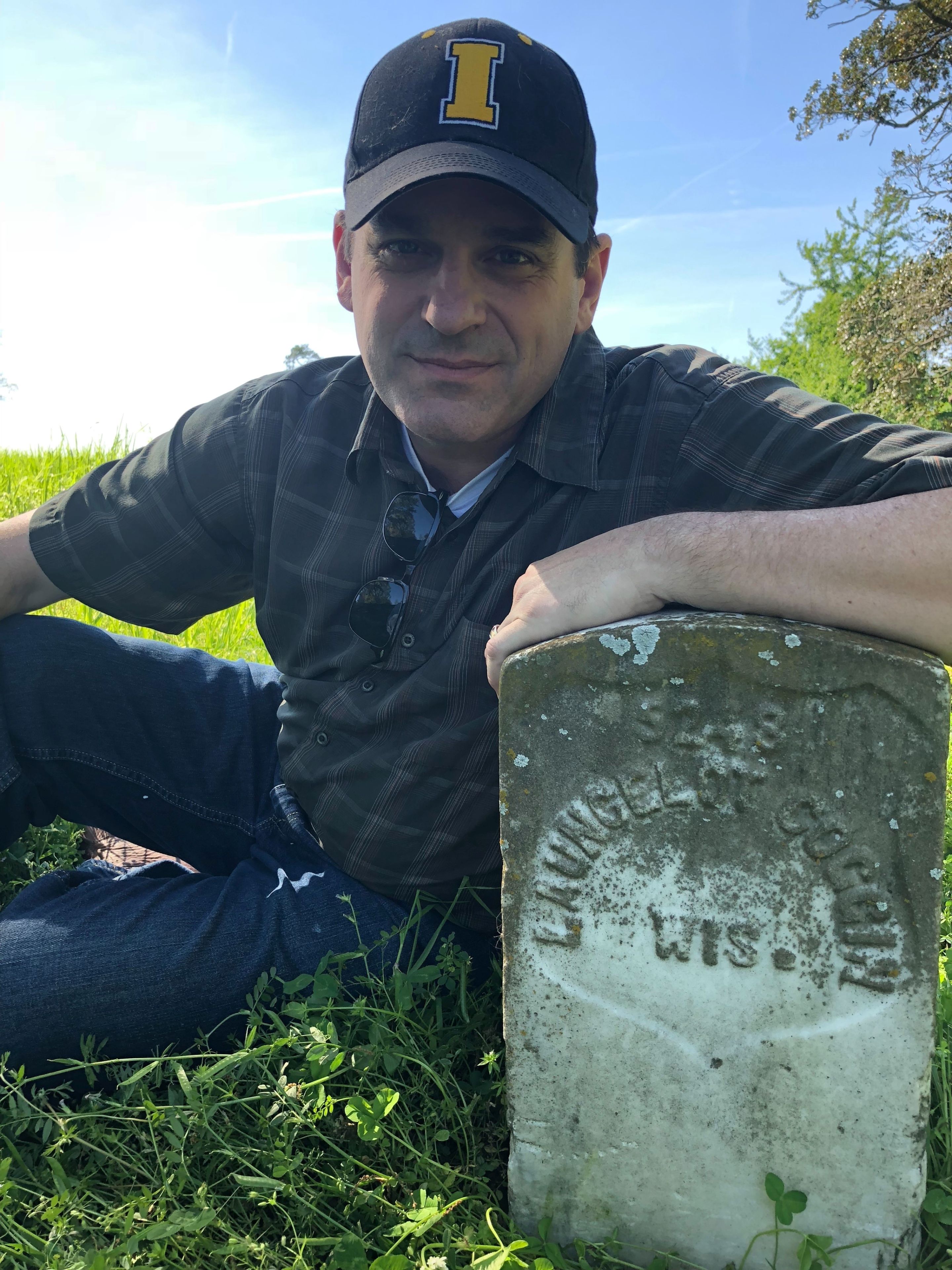Adventures in the Trade
Good Spelling Don't Stop a Bullet
Photo by SOULSANA from Unsplash
Adventures in the Trade
Good Spelling Don't Stop a Bullet
Photo by Mark Olsen from Unsplash
By Jason Nottestad
In the summer of 2007, my father and I were approached by a large home-products company wanting to become a fabricator in the stone industry. Their goal was to sell fabricated tops to their current customer base that largely worked with a different kind of countertop. The company wanted us to set up a hard-surface-installation training center for them in one of their factories in the South. The housing-crisis tipping point was still a year away and we were very busy, but my dad and I decided to do it. We designed a training manual and a layout for a training area. And three kitchens: a standard L with a peninsula, an L trapped by cabinets with a large island, and an L with a corner sink, island with stove, and raised snack bar. We also had a pass-through top with ears, and a simple vanity top. The class was planned for three days. Day one was inspecting cabinets, setting sinks, leveling, and material handling. Day two was hard seams, attaching sinks, and setting backsplash. Day three was learning to cut stone, drill holes, and polish. We wanted the class participants to have real-world challenges, so the workers who set the cabinets were only given a framing square and a 2’ level for tools. The cabinet planes and squares wandered quite a bit in every direction. It was perfect. Aside from trips to Disney, the beach, and attending Space Camp a few times as a kid, I hadn’t spent much time in the South. Quite honestly, I knew little about the place. Over time I’d learn all I needed to know about moonshine, water bugs, and Sherman’s March to the Sea, but that was ahead of me. With the training center completed and all our tools and countertops ready, we began the instruction.

Photo by Jason Nottestad
One of the three kitchen vignettes my father and I designed for teaching hard-surface installs.
They shared three things in common: an ability to draw countertops in CAD, less-than-perfect grammar, and a hatred of me.
Teaching my first class was a challenge for my nerves. Even though I’d installed more than 100,000 ft² of countertops, I’d never really taught installation before. I wasn’t sure how the class was going to be received, especially from someone with a Wisconsin accent. I was pleasantly surprised. The first class had a dozen participants from all over the South. I started with my pre-installation checklist and moved forward from there with installing sinks, material handling, and leveling pieces. “Pretend you’re installing a piece of plate glass and you’ll never break a piece,” was my main message. The training center was in part of the non-air-conditioned factory and it was hot. It seemed like I was the only one who noticed. To everyone else, it was just weather. Yankee-melting weather. The biggest complaint from the group was how heavy the pieces were- even though we had lifting handles, carts, and wheels. Looking back now, from the era of aircraft-carrier-sized slabs and mega islands, that complaint seems funny. The first two days of the class went well, and the participants seemed to be really learning. On the third day we were drilling a hole in a countertop, and I showed the class how it was necessary to roll the bit around to widen the area in which the dust or slurry could escape. One of the guys said, “You mean you waller it out,” like a pig wallowing in a muddy hole. It was a great phrase, and we all laughed about it. The first class was a success. When Lehman Brothers collapsed and the 2008 financial crisis came on, the work in Wisconsin dried up. The company offered me a position as the head of their hard-surfaces customer-service department and, with disappointment, I accepted. My template/install days were done too quickly. It was a great way to make a living. I was on my way South. The department I took over was quickly staffed with seven individuals from small towns all over the region. They were a diverse group who shared three things in common: an ability to draw countertops in CAD, less-than-perfect grammar, and a hatred of me. The idea that ‘we’re stone guys and gals and, as long we produce invisible seams and perfect overhangs, grammar shouldn’t apply to us’ never took hold in me. I’m an English major who happens to be in the trades. A philosophy which made me deeply unpopular in the land where Walmart has an ‘s’ on the end and words mysteriously gain extra syllables.

Photo by Jason Nottestad
I always demonstrated how to roll the bit when cutting a hole in the countertop, which became the fine technique of "waller it out."
Every correction I made was met with resistance, as if I was insulting their way of life.

Photo by Jason Nottestad
One-half of my office Christmas present. The other part was a bit scary.
My staff and I sent out a daily steady stream of customer emails, and the ones I was CC’ed on horrified me. Questionable spelling, grammar, and meaning was no way to convey information about expensive countertops. I began proofreading the staff emails before they were sent out. Things went downhill quickly from there. Every correction I made was met with resistance, as if I was insulting their way of life. “The guy I’m sending this to will understand when I say it that way.” It was the War of Northern Aggression all over again. I became ‘that Yankee’ and then ‘that f**kin’ Yankee.’ Every day for the better part of a year. One morning after I arrived for work, our receptionist – a very kindly grandma type – poked her head in my office and said, “You know I pray for you.” As if she knew bad things were heading my way and she was hoping to gain me some favor before they did. In a way it sounded like a threat. “Um, thank you,” was all I could say. She glanced nervously at the small Buddha statue on my desk and left. I threw them a small Christmas party and they all pitched in and got me a bobblehead and a knife. It was a wicked-looking folding weapon. Apparently, I was the only man they knew who didn’t carry a knife. In the back of my mind I was thinking, “If I’m armed, and they are armed, maybe they justify an attack?” The final straw was right after the new year. I was peeking over the shoulder of Chris, my most-experienced countertop guy, as he wrote out an email to one of our best customers. I was just raising my finger to point out a mistake when he turned around and said, “If you discorrect me again, I’ll stab you in the f**kin’ throat.” Denny, seated next to him, piped in. “You know if we had another Civil War the South would win.” “Why’s that?” I asked. “Cause good spelling don’t beat a bullet.” They both laughed and then whooped a bit. Randy joined in and the three of them had a little inter office Rebel Yell. Which, in some way, relieved the atmosphere. The next day, they protested a little less at my corrections. Gradually, we arrived at a kind of equilibrium – out of principle, they would continue with their way of communicating. And, begrudgingly, accept my corrections.
We ate grits and biscuits and gravy, and they lamented the lack of parking-lot fights that particular night.
We even became friends, in a way. Denny had me out to his place one weekend to show me his land. He had 40 acres in the foothills of the Appalachians with a nice stream running through it. When I asked about some rock piles near the stream he said, ‘’That’s where they buried the Yankees,” and left it at that. I continued to teach the installation class and, a few months after the office truce, was asked to help one of our customers with a VIP install in a gated community up in the mountains. I travelled with the three installers to a monstrous house overlooking a golf course and hydroelectric lake. We installed an island with two waterfall panels, and the kitchen was taking shape. The owners – a pleasant retiree couple from Ohio – would pop their heads in every now and then to compliment how everything looked. We just had the sink run and backsplash to go. It was a 2cm top with a 4cm laminated edge, so we had installed a ¾” plywood strip against the back wall and strips along all the cabinet tops. The sink piece was captured between two finished panels; we had to lift it, pancake it, and slide it into place. The lift and pancake went well, but as we slid it, the back edge caught against the edge of one of the strips and stopped. I told the guys I’d reach to the back and lift it over the strip- then we could push again. I reached and lifted, but their push was too quick. I tried to lift my hand out of the way and got everything clear except the tip of my middle finger, which was pinched and torn pretty badly. I grabbed the finger with my other hand and stood there, a bit stunned. “Look at that,” one of them said, “We spilled some Yankee blood.” We all laughed at that. The homeowners came in at that very moment to see four crazy guys laughing and one of them holding a bloody fingertip in place. The wife brought out a first-aid kit that would have made a combat medic proud. She wrapped my wound with so much bandage it looked like one of those cartoon fingers after getting hit with a hammer. As soon as she left the room I tore it off, wrapped it with a bit of blue tape, and helped finish the install. The VIPs were very happy with the job. The installers thanked me by treating me to my very first Waffle House experience. We ate grits and biscuits and gravy, and they lamented the lack of parking-lot fights that particular night. I traveled into the foothills another time to help one of my favorite customers fix a chip on the edge of a sink. I rounded over the top of the sink cutout until the chip was gone, and the homeowner was very happy. He was a preacher and was hosting a revival that weekend and wanted everything to be perfect. I asked him if it was a good thing that my receptionist prays for me. He said, “That depends,” and left it at that. My customer was happy I’d helped him out with the chip. “You’re my favorite Yankee,” he said. “You come burn my house down any time you like.” Eventually my family moved South with me, and bought a house on an odd, split street that had upper and lower sections. The lower street never had a street sign, which I thought was a bit weird. I got into a routine of sorts. Grammar lessons every day and training classes once a month. I learned who made the best moonshine at the plant and that you could buy it out of their trunk in the parking lot at the end of the shift. I even went to a NASCAR race and sang ‘I’ve Got Friends In Low Places’ with 100,000 other people. We got in the Guinness Book of World Records for that one-largest group karaoke. And we visited a few of the Civil War battlefields. Years later I’d learn that my fourth great grandfather, a Lancelot Solomon Coggin, fought for the Union and is buried in Vicksburg, Miss. We even visited his grave … on which his name is spelled wrong. I’m glad none of my staff learned that. It would have been awkward. Eventually, I took another role with the company and we left the South. Shortly before we did, the city finally put up a street sign on the lower road where I lived. It was spelled wrong. The gods were telling me it was time to go.

Photo courtesy Jason Nottestad
160 years later, the tombstone of a fallen relative shows that, indeed, war is a battle and not a spelling bee.